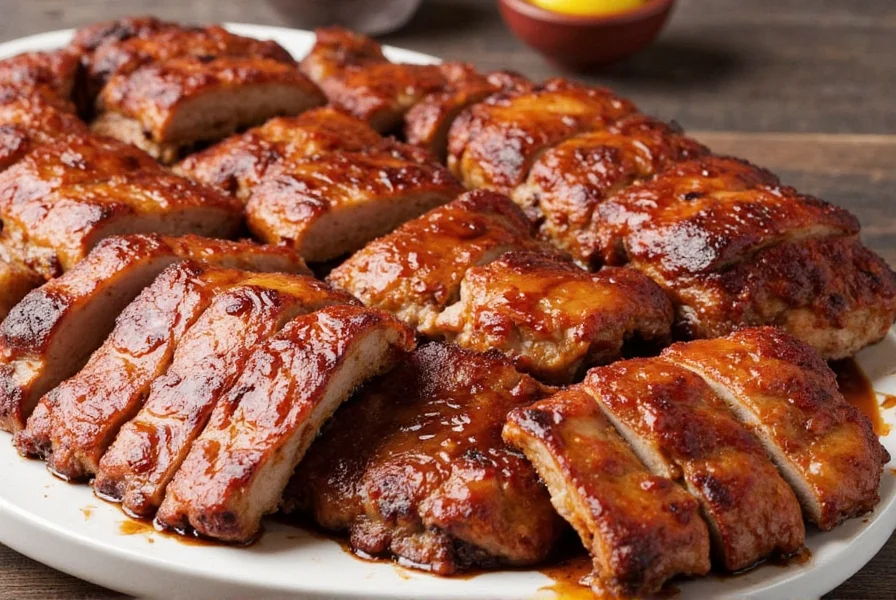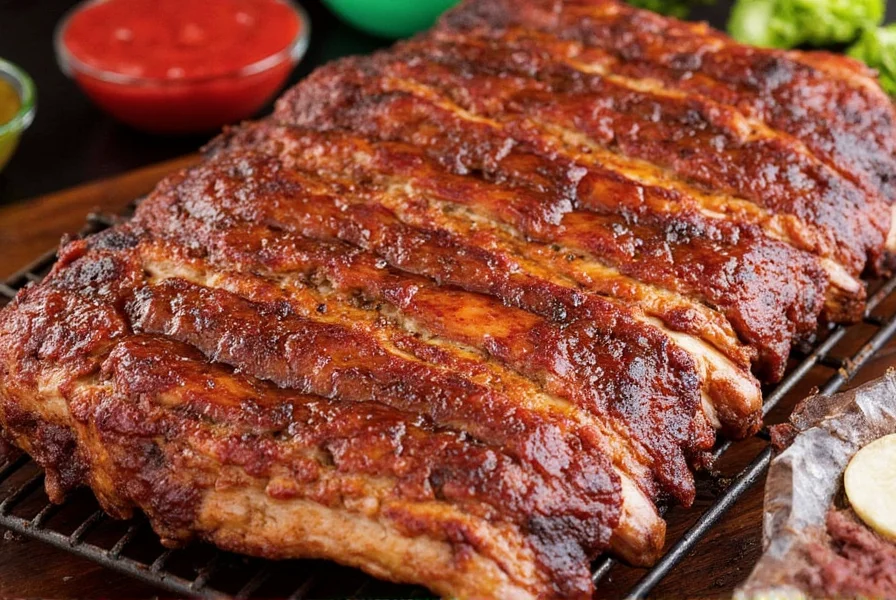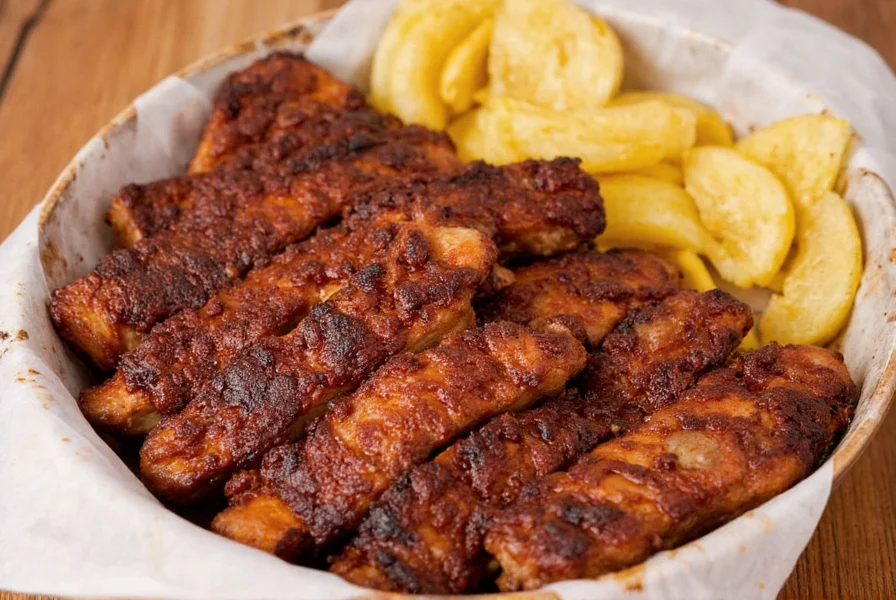If you're searching for information about "ribs pork," you've likely noticed this term sounds unusual. The correct culinary term is pork ribs—not "ribs pork." This common search confusion happens because of how people sometimes phrase their queries, but professional chefs, butchers, and recipes consistently use "pork ribs" to describe this popular cut of meat. In this comprehensive guide, you'll learn everything you need to know about pork ribs, including the different cuts, cooking methods, and expert preparation tips that actually deliver tender, flavorful results.
Understanding Pork Ribs: Your Complete Guide
When searching for information about pork ribs, you'll encounter various cuts, each with distinct characteristics that affect cooking time, texture, and flavor. Understanding these differences is crucial for achieving perfect results whether you're grilling, smoking, or baking.
Types of Pork Ribs Explained
Contrary to the "ribs pork" phrasing sometimes seen in searches, the proper term helps you find accurate information. Here's what you need to know about the main cuts:
| Type | Description | Best Cooking Method | Cooking Time at 225°F |
|---|---|---|---|
| Baby Back Ribs | Curved, leaner cut from top of rib cage near spine. More tender with less fat. | Grilling or roasting | 3-4 hours |
| Spare Ribs | Flatter, meatier cut from belly area with more marbling and connective tissue. | Smoking or slow cooking | 5-6 hours |
| St. Louis-Style | Trimmed spare ribs with uniform rectangular shape, removing sternum and excess fat. | Barbecue or smoking | 4-5 hours |
Why Cooking Temperature Matters for Perfect Pork Ribs
One of the most frequently searched questions is "how long to cook pork ribs," but temperature control is actually more critical than timing alone. For fall-off-the-bone tenderness without drying out:
- Target internal temperature: 195-205°F (90-96°C) - this melts collagen without overcooking
- Low and slow method: Maintain 225-250°F (107-121°C) for smoking or baking
- Doneness test: Meat should pull back 1/4-1/2 inch from bones, and bend easily when lifted

The Membrane Removal Guide Every Pork Ribs Cook Needs
One of the most overlooked steps that makes or breaks your pork ribs is removing the membrane (silverskin) from the bone side. This thin, shiny layer:
- Prevents seasoning penetration when left intact
- Becomes tough and chewy during cooking
- Restricts smoke absorption in barbecue
How to remove it:
- Slide a butter knife under the membrane at one end
- Lift gently to create a small opening
- Grab the edge with a paper towel for better grip
- Pull the membrane off in one piece toward the opposite end

Best Spice Blends for Pork Ribs (No More "Ribs Pork" Confusion)
When people search for "ribs pork" information, they're often looking for seasoning advice. Here are three proven spice blends tailored to different cooking styles:
| Style | Ingredients | Best For | Application Tip |
|---|---|---|---|
| Classic BBQ Rub | 1/4 cup brown sugar, 2 tbsp paprika, 1 tbsp each: salt, garlic powder, onion powder, black pepper, 2 tsp chili powder, 1 tsp cumin | Smoking or grilling | Apply 1 hour before cooking; wrap in foil after 3 hours |
| Asian-Inspired | 1/4 cup soy sauce, 2 tbsp honey, 2 tbsp rice vinegar, 1 tbsp ginger, 3 garlic cloves, 1 tsp sesame oil | Braising or pressure cooking | Marinate 4+ hours; reduce sauce for glaze |
| Dry Caribbean | 2 tbsp allspice, 1 tbsp thyme, 1 tbsp garlic powder, 1 tbsp onion powder, 2 tsp cinnamon, 1 tsp cayenne, 1 tsp nutmeg | Grilling or baking | Apply generously; spritz with orange juice while cooking |
5 Common Pork Ribs Cooking Mistakes (And How to Fix Them)
Based on frequent search queries about "ribs pork," here are the top errors home cooks make and professional solutions:
- Mistake: Using high heat to speed up cooking Solution: Low temperatures (225-250°F) allow collagen to melt gradually without drying meat
- Mistake: Not removing the membrane Solution: Always remove the silverskin for better texture and flavor penetration
- Mistake: Checking ribs too frequently Solution: Minimize opening smoker/grill; use a remote thermometer
- Mistake: Guessing doneness instead of testing Solution: Use the bend test—ribs should droop when lifted with tongs
- Mistake: Skipping the resting period Solution: Rest for 15-20 minutes wrapped in foil to redistribute juices

Proper Storage and Reheating for Leftover Pork Ribs
Another common search pattern involves "ribs pork" storage questions. Here's the professional approach:
- Refrigeration: Store in airtight container up to 4 days
- Freezing: Wrap tightly in foil + plastic wrap; lasts 2-3 months
- Best reheating: 300°F oven in foil with 2 tbsp apple juice for 30 minutes
- Avoid: Microwave reheating (makes ribs rubbery)
Frequently Asked Questions About Pork Ribs
Why do some people search for "ribs pork" instead of "pork ribs"?
The "ribs pork" phrasing typically appears when non-native English speakers construct queries or when voice search misinterprets "pork ribs." Culinary professionals and standard recipes consistently use "pork ribs" as the correct term. This search pattern creates content challenges, as accurate information uses the proper terminology, while some users search using the inverted phrase.
What's the ideal internal temperature for pork ribs?
Unlike other meats where 145°F is safe, pork ribs require higher temperatures for optimal texture—195-205°F (90-96°C). This higher range melts collagen into gelatin, creating that signature fall-off-the-bone tenderness without drying out the meat. Use an instant-read thermometer in the thickest part between bones for accurate readings.
Can I cook pork ribs in an Instant Pot?
Yes, but with adjustments. For baby back ribs: 15 minutes high pressure + 15 minute natural release. For spare ribs: 22 minutes high pressure + 15 minute natural release. This works well for Asian braised ribs but won't develop bark or smoky flavor. Always remove membrane first and finish under broiler for texture.
How do I know when pork ribs are done without a thermometer?
Use the bend test: lift the rack from one end with tongs. Properly cooked ribs will bend substantially, and small cracks will form in the bark. The meat should pull back 1/4-1/2 inch from the bones. For finger testing, the meat should separate easily between bones but not fall completely off.
Why are my pork ribs tough even after long cooking?
This usually happens when temperature is too low (below 200°F) or when cooking is interrupted. Collagen needs sustained heat between 160-205°F to properly convert to gelatin. Another common cause is not removing the membrane, which prevents heat penetration. Ensure consistent temperature and never skip membrane removal for tender results.
What's the 3-2-1 method for smoking pork ribs?
The 3-2-1 method involves: 3 hours smoke unwrapped, 2 hours wrapped in foil with liquid (apple juice/butter), 1 hour unwrapped to set bark. This produces incredibly tender ribs with perfect texture. Adjust times slightly based on rib thickness and exact smoker temperature (225°F ideal).
Professional Pork Ribs Tips Summary
Understanding the proper terminology "pork ribs" (not "ribs pork") opens the door to accurate information and better cooking results. The key takeaways for perfect pork ribs every time:
- Always remove the membrane for tender, flavorful results
- Maintain consistent low temperature (225-250°F) rather than focusing solely on time
- Target 195-205°F internal temperature for optimal texture
- Use the bend test as your primary doneness indicator
- Rest ribs for 15-20 minutes before serving
By following these science-based techniques rather than relying on vague search terms like "ribs pork," you'll consistently achieve restaurant-quality pork ribs with perfect texture and deep flavor penetration. Remember that proper terminology leads to better information—search for "pork ribs" when looking for authentic cooking guidance.










 浙公网安备
33010002000092号
浙公网安备
33010002000092号 浙B2-20120091-4
浙B2-20120091-4